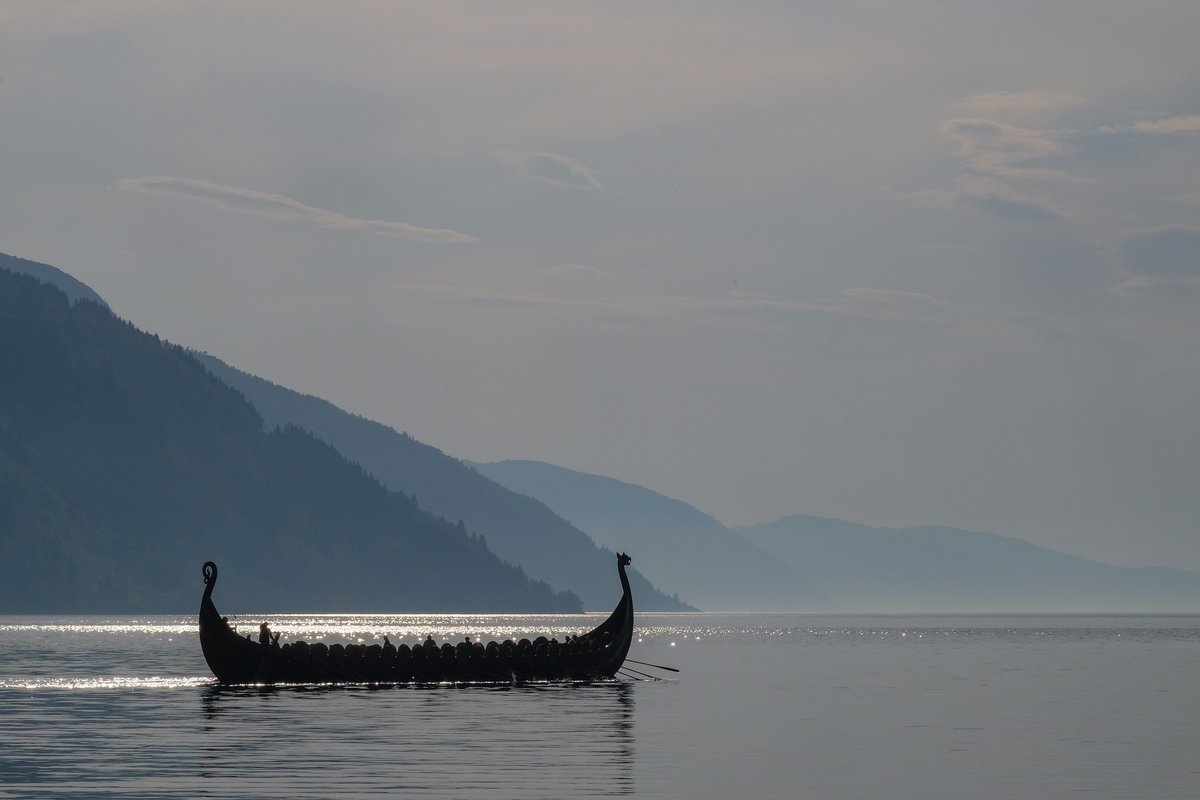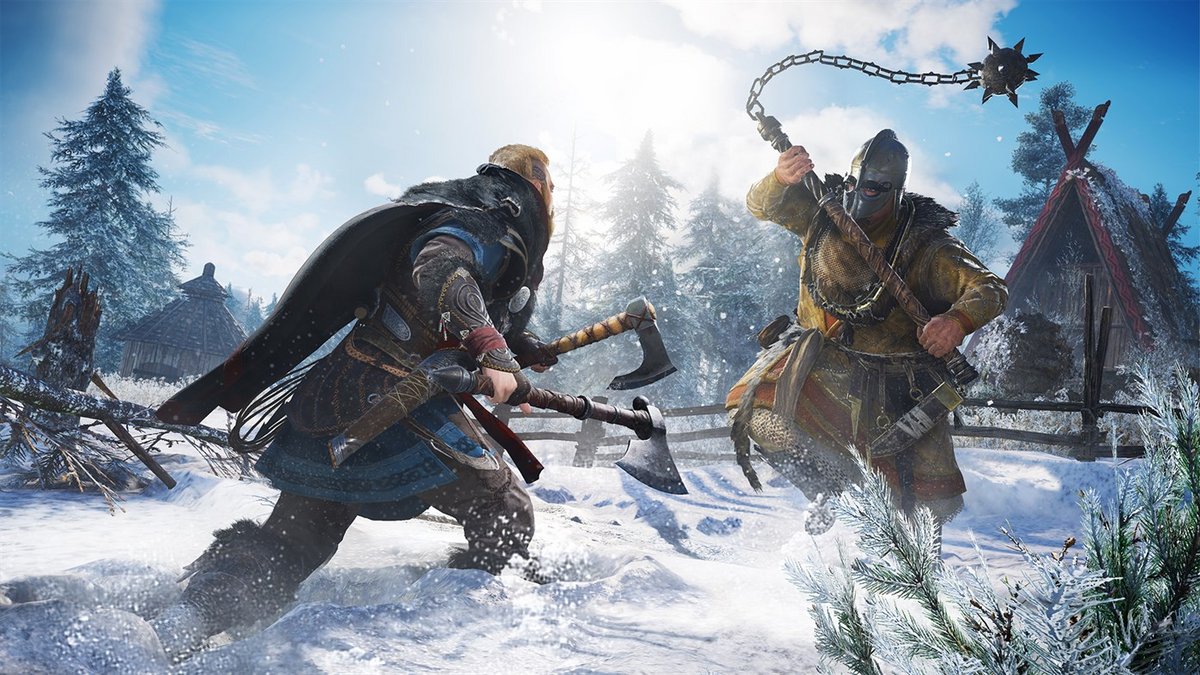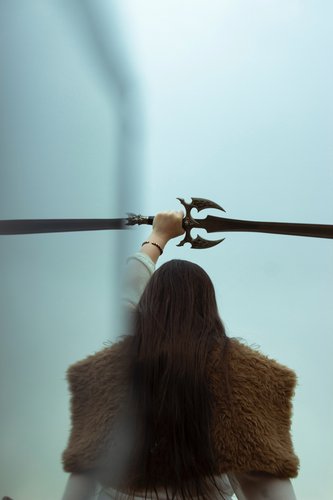Contemporary Perspectives on the Vikings
Vikings in popular culture shed light on contemporary society.
Summary: Portrayals of Vikings in literature and the media are rarely based on historical fact, but sometimes this can make them even more interesting. Their image and behaviour often mirror very contemporary issues, and can even help us to play with and understand diverse and conflicting issues in society. Research shows this can include such dichotomies as strength/vulnerability, traditional views of femininity/masculinity, reality/fantasy and many more.
The connection between the idea of the Viking and an extreme or especially violent form of masculinity is a long-standing one, going back to descriptions of brutal Viking raids on British shores in the late 700s. In subsequent centuries, the figure of the violent Viking barbarian has been developed and used in a myriad different versions and settings – not least as a symbol in Nazi imagery during the 1940s. This is a legacy that we can see resurfacing today in alt-right and neo-fascist discourses of white supremacy and calls for a return to traditional gender roles.
Since the 1960s, historical and archeological research on the Viking Age has attempted to add nuance to the generalized idea of the Viking barbarian, and challenge the field’s own bias in focusing predominantly on men and conflict. Researchers have endeavored to broaden the idea of what Viking Age society was and challenge the ideas of gender and masculinity implicit in the construction of ‘the Viking’ and the Viking Age. To some extent, this has been mirrored in contemporary popular Viking media and popular history and outreach, such as Viking exhibitions that focus on trade and society in addition to raids and warfare, or in popular media like the History Channel’s Vikings, with its many prominent female characters.
At the same time, the manly Viking warrior and his wide popular appeal persists, circulating both in many people’s minds as well as in diverse forms of media and culture. This we can see in the current popular Viking boom, with blockbuster movies (The Northman), video games (Assassin’s Creed: Valhalla), music, and TV programmes – including Vikings, which ultimately lingers on its mighty manly Viking warriors and the battlefield.
The popular Viking
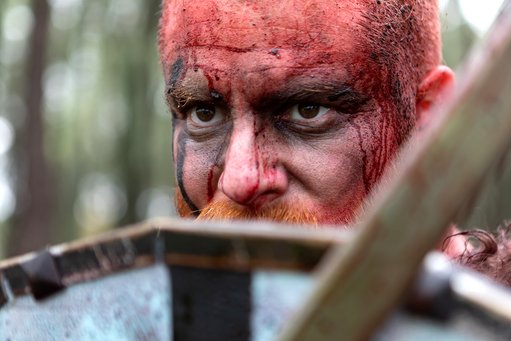
The ’popular Viking’ is one that is not really based on historical facts, but refers to how the image and understanding of Vikings and the Viking age have grown in the popular imagination.
It is easy to interpret the popular Viking – a figure of the past (if a highly imaginative one) and associated with extreme forms of masculinity – as foremost a reactionary figure. That is, associated with ideas or groups that consider things like equality, diversity, and multiculturalism as threatening and dangerous. The Viking is often used as a symbol in regressive contexts, but in my research on Viking imagery in contemporary fantasy literature, I also found that far from being a static and conservative image of masculinity, the Viking engages in complex and varying ways with questions and anxieties regarding masculinity in the present moment.
Representations of Vikings can be two – or more – things at once
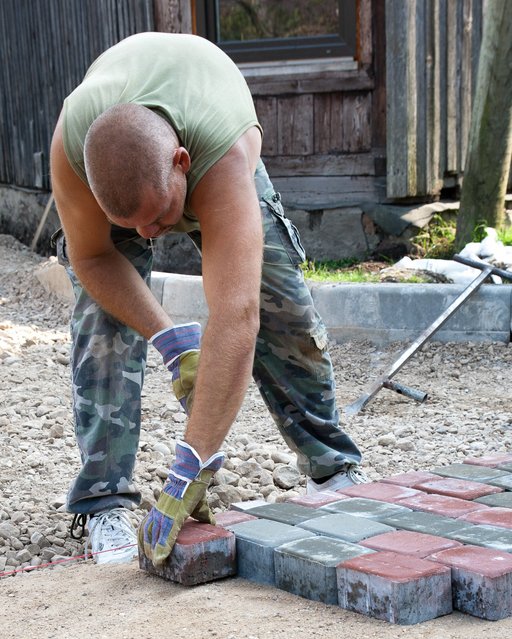
A manly, vulnerable body
The physical body of a Viking is masculine, strong, capable, violent, and self-sufficient. It is closely associated with whiteness and normative, taken-for-granted ideas of what men or masculinity is supposed to be. At the same time, it also expresses a kind of working class masculinity; a form of masculinity that revolves around a muscular, labouring body.
Research on images and ideas of masculinity has indicated that this form of white, working-class masculinity is both naturalizing the idea of patriarchal power as originating in the male body, and exposing male vulnerability. The physically strong, working male body is a pervasive image of male strength and of a form of masculinity that in terms of systemic power is inferior and subordinate. Precisely this white, muscularly built body in the media tends to become an arena where concerns and anxieties regarding men and masculinity come to light. This masculinity then simultaneously becomes representative of ideas of male vulnerability in relation to systemic power and symbolic of male strength.
In the case of the popular Viking this is often even more pronounced: As research on Viking media shows, the Viking generally emerges not only as manly and tough, but as the manliest and toughest – the ultimate masculine power fantasy. As a figure of the distant past and associated with the idea of a wild and harsh North, the Viking barbarian comes across as a figure quite at odds with the modern world. It is perhaps no wonder, then, that the Viking sees such a popular resurgence at this very moment of widespread fear of loss of traditional male power and gender roles, where a recurring narrative in the media is one of men and masculinity being in crisis.
Female empowerment and submission
Perhaps, surprisingly, then, Vikings and the Viking Age are also sometimes associated with progressive gender roles. This is based on the idea of the Viking Age as more gender equal in comparison to other societies at the time, on popularized images of strong Viking women (such as the popular shieldmaiden Lagertha from Vikings), and the possible presence of female warriors in Viking Age society. However, it is not only the image of Viking warrior women that lends itself to a narrative of female empowerment or feminist considerations. The manly Viking hero is a common motif in romance literature, aimed primarily at female audiences. Here researchers have found that extreme and excessive Viking masculinity often becomes a productive arena for working through themes like empowerment, sexuality, and sexual violence precisely because the Viking is a figure divorced from the modern day.
Alexandra Service (1998) notes that the Viking barbarian is a motif of adventure and freedom and that the often repeated story of maidens being carried away by Vikings is not only a gendered, sexist narrative, but also one promising a pleasurable escape from responsibility and the drudgery of modern-day life. This, she argues, appeals to consumers of Viking stories regardless of gender. In other words, the popular Viking on the one hand offers an image of masculine strength and empowerment and, on the other, the possible thrill of submission. The scholar Service understands this duality as being key to the appeal of the Viking in popular media.
Queer male desire and subverting traditional gender roles
In my own research, looking at contemporary examples of fantasy literature, I found that it is not only maidens that find themselves carried off by the barbarian Viking. As with most Viking media, the Viking often emerges as the toughest and hardiest of all men in fantasy texts. As such, they are called upon to save or carry off not only women, but also other men. The male protagonist of Mark Lawrence’s The Red Queen’s War (2014–2016) spends a large part of the series being wounded and subsequently carried around by a strong Viking warrior, whose muscular body he enviously ogles every chance he gets. The Viking also becomes an object of queer male desire in two other fantasy trilogies: Richard K. Morgan’s A Land Fit for Heroes (2008–2016) and Elizabeth Bear and Sarah Monette’s The Iskryne Saga (2007–2015). Furthermore, Joe Abercrombie’s fantasy novels Best Served Cold and The Shattered Sea portray several Viking warriors falling under the thrall of more powerful women.
In some cases, warriors are victimized by these powerful women in ways that pose important questions about male bodily autonomy and sexuality. Others sacrifice typical toxic or traditional forms of masculinity in order to become better men for their love interests.
What do contemporary perspectives on the Vikings tell us about society?
Contemporary portrayals of the Viking to some extent respond to feminist critique of gendered stereotypes in the media and calls for marginalized groups like LGBTQ representation and inclusion. Furthermore, the Viking engages readily with questions of sexuality, queerness, toxic forms of masculinity, and what being the kind of man the Viking is imagined to be means. Far from being only a static and reactionary figure, the Viking seemingly responds to contemporary upheavals and questions regarding masculinity, gender, and power. As a symbol of extreme masculinity, then, the Viking seems an ever-changing and multifaceted one.
Literary analysis can shed light on contemporary gender and stereotypes.
This article is published in response to an interest in Vikings and gender.
Further reading:
- Alexandra Service, Popular Vikings: constructions of Viking identity in twentieth century Britain (PhD thesis, University of York, 1998).
- Andrew Wawn, The Vikings and the Victorians: inventing the old north in nineteenth-century Britain (D. S. Bewer, 2000).
- Carl Olof Cederlund, 'The Modern Myth of the Viking', Journal of Maritime Archaeology 6, 1 (2011) pp. 5–35.
- Stefanie von Schnurbein, Norse Revival: Transformations of Germanic Neopaganism (Brill, 2016).
